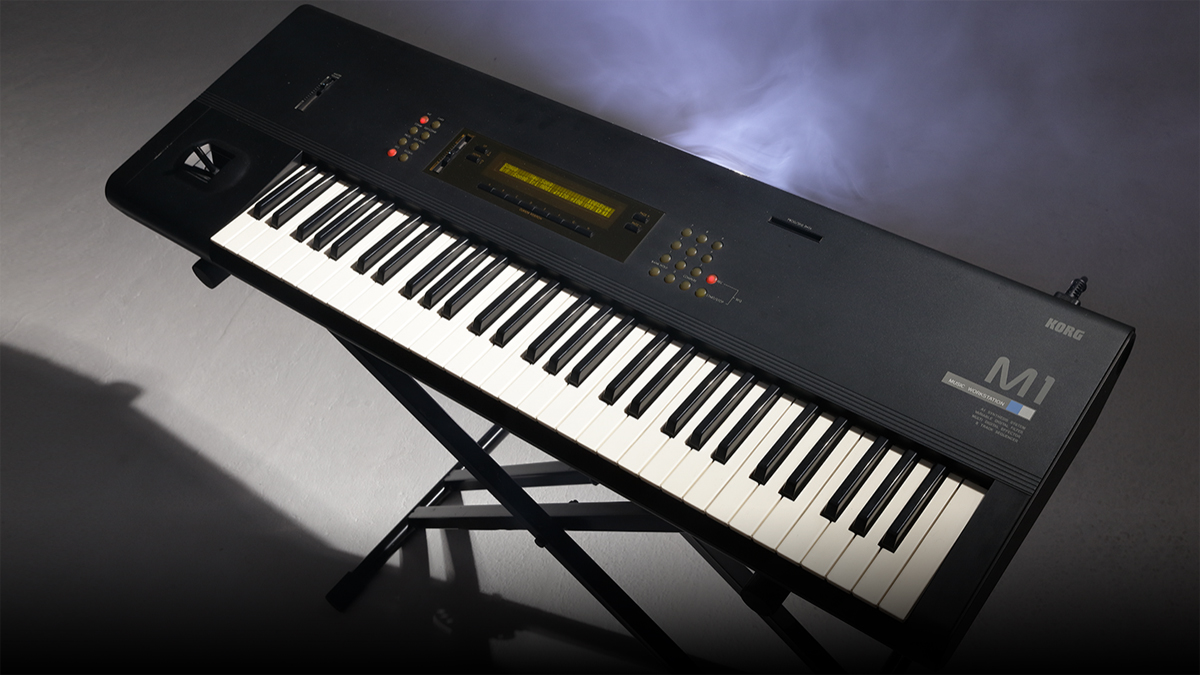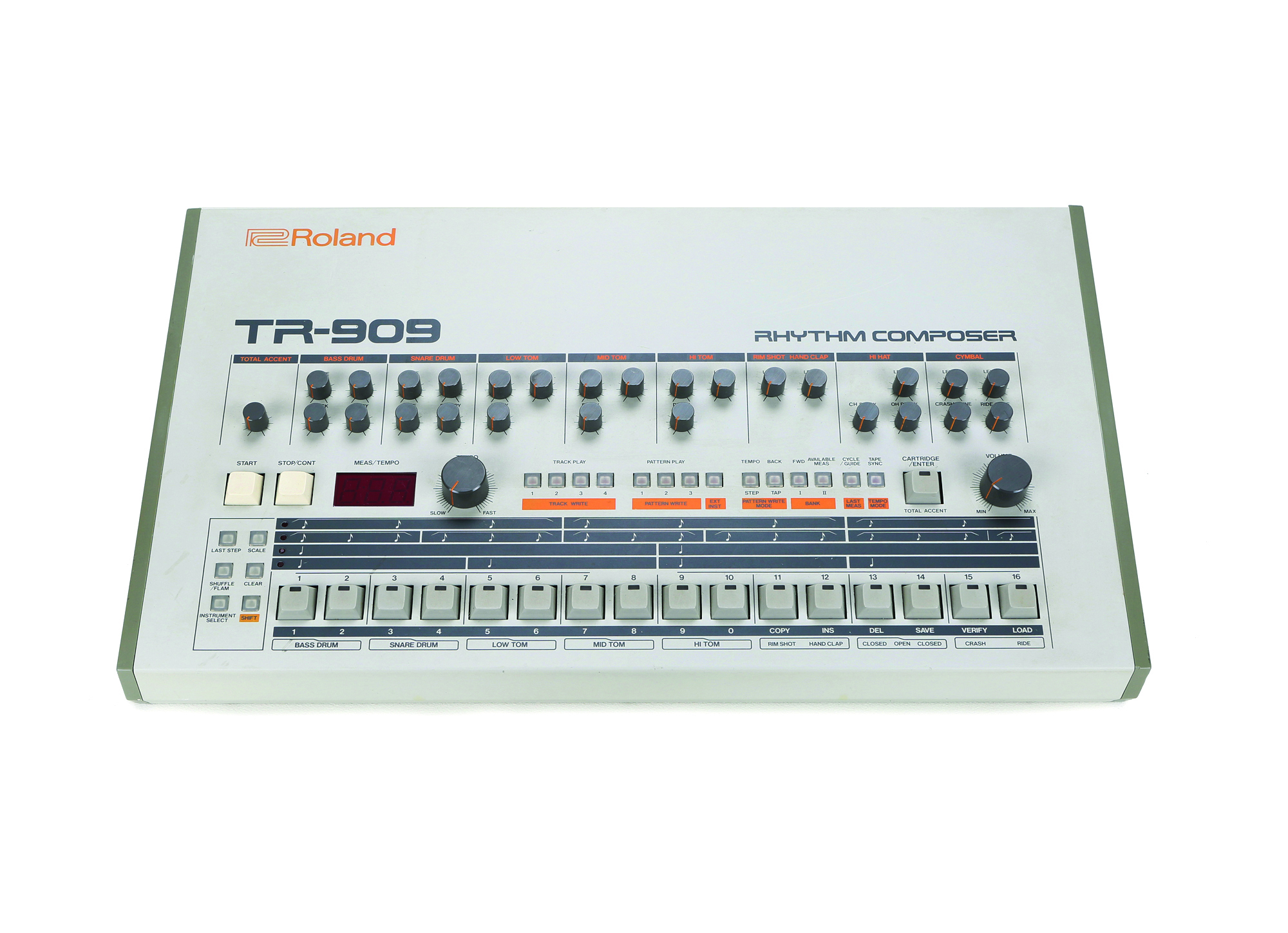4 '90s house cliches that we still can't get enough of
Create jackin' beats, cut-up vocals, iconic pianos and organ bass in your DAW

It feels like '90s house music is enjoying a bit of a revival at the moment, and that's something we can really get onboard with.
What's more, creating iconic sounds from the era - the likes of drums, vocals, pianos and bass - is pretty easy in your DAW, so let's explore four '90s house cliches that still work today.
1. Jackin’ beats
A surefire way to give your 4/4 beats a retro-inspired feeling of groove is by referencing the head-nodding shuffle of UK garage. Characterised by skipping ghost snares and off-kilter swing, UKG beats are probably the most booty-shakin’ out there – and it’s reasonably easy to shoehorn this vibe into a house or techno tune for some '90s authenticity.
When choosing sounds for a beat, the ‘lighter’ and tighter your drum hits are, the ‘groovier’ and ‘skippier’ everything will sound. Thinner-sounding one-shots with a short dynamic profile will leave more room for the surrounding elements to breathe, and emphasise the gaps between. Pair this approach with a purposeful application of swing, and your beat will bring the funk in no time.
On the topic of sound selection, you need to select appropriate drums to begin with. '90s house and garage was created using analogue drum machines and samples lifted from vinyl records, so follow this method for an authentic aesthetic – overly synthetic or digital-sounding beats aren’t going to cut it. A good technique is to chop out hats and snares from famous funk breaks, resequence them around solid TR-909 one-shots, then adjust the pitch and length of the hits to taste.

On many hardware drum machines, the open and closed hi-hat were assigned to a single ‘choke group’, meaning that only one could play at a time. This limitation is easy to replicate when programming these parts in your DAW – just make sure that they never play at the same time, and use the closed hat’s absence to allow the open hat to ‘swell’ open at the perfect point. You’ll probably have to experiment a bit to get this interplay just right, but it’s worth the effort.
Ghost snares, meanwhile, are the quieter syncopated snare hits peppered throughout the groove. Often, throwing in the odd snare on the last 16th-note of a bar is enough to reference '90s-style beats. The more ghost snares you add, the more ‘hectic’ the beat will sound.
Get the MusicRadar Newsletter
Want all the hottest music and gear news, reviews, deals, features and more, direct to your inbox? Sign up here.
2. Cut-up vocals
It’s hard to imagine the evolution of '90s house and garage without the presence of Todd Edwards and Marc ‘MK’ Kinchen: two producers who found massive success with distinctive personal styles both involving a similar vocal sampling technique.
For tracks such as Edwards’ Saved My Life and MK’s remix of Push The Feeling On by Nightcrawlers, the producers chopped up vocals and replayed them as if they were instruments, turning them into catchy gibberish hooks. Both producers remain active to this day. Edwards inspired and then collaborated with Daft Punk, while MK took a hiatus from house before returning in 2013 to huge chart success.
Back in the day, the technique was painstakingly laborious, involving recording isolated vocal tracks into a hardware sampler, then individually editing each slice of the sound so that separate notes were spread out across a MIDI keyboard and playable as an instrument. Anyone who’s ever used a 90s hardware sampler will know that setting the slice points just right to avoid clicks and tuning the samples to match the key of your track could take hours, if not days.
In the modern DAW, the process is almost effortless. Techniques will vary depending on your chosen software sampler, but the overall approach usually starts by dropping in a vocal recording (either an isolated acapella from an existing track or an original recording from a vocal session) then slicing it by transient, at which point most samplers will automatically map the slices to MIDI notes. Tune appropriately, pick out the catchiest snippets, then play the parts like any other synth, ignoring the lyrical content, which become a kind of abstract tonality for adding interest. It’s a hugely distinctive technique that works across a range of genres, both when making original tracks and remixing other people’s (as MK demonstrated to devastating effect on countless classic remixes). Best of all, you get to feel smug about the fact that you’re not having to edit everything using a jog wheel and tiny LCD screen like you would have done back in the day.
3. Perfect pianos
Where to start with the iconic sound of piano house? Classic Chicago tracks like Marshall Jefferson’s Move Your Body? Italo goodness along the lines of Electric Choc’s Shock The Beat? Sample-driven fodder like David Morales’s Needin U? Whichever flavour floats your boat, there’s no doubt that piano house remains as relevant as ever, thanks to current tracks like Weiss’s giant 90s-inspired hit Feel My Needs.
Recording a real piano is right up there with the most daunting of studio tasks. First, of course, you need a great piano, perfectly tuned; then you’ll want a nice-sounding room for the ambience, top quality mics and high-end preamps to match. But, wait a minute – do you really think all those classic house tracks were recorded that way? Of course not! For piano house, cheap and cheerful is pretty much always the way forward.
Most DAWs these days include a good piano instrument of some sort, whether multi-sampled from the real thing or synthesized as realistically as possible. This should be your starting point before spending any money on plugins, but commercial options will allow you to get even closer to the classic sound. Korg’s Legacy Collection is a little long in the tooth, but it just works. The piano sound in the M1 plugin ($50) is the iconic early 90s house piano, as heard on tracks like Black Box’s Ride On Time. As a gritty alternative, FM synths can do some really interesting piano effects – definitely not realistic, but useful in their own right. Have a play with NI’s FM8 to see how effective the approach can be.
Using real piano sounds might not be the most common option, but it’s also interesting in its own right. Multisampled instruments or modelled plugin synths like Modartt Pianoteq add a hi-fi slickness to house productions, but for something a bit more interesting we also love the subtle timbres of Spitfire Audio’s Olafur Arnalds Composer Toolkit. It’s certainly not a cheap option at £249, but the delicate sound of the 1904 Beckstein grand piano customised with a felt strip is pure class.
4. Organ bass
The Korg M1’s other great contribution to house music was the organ bassline, thanks to its presets being used on massive tracks like Robin S’s Show Me Love. It’s a smooth, round sound that gives a mellow but ultra-melodic clarity to bass parts. The secret to bringing it up to date for the 21st century is to layer a solid sub bass synth underneath it, bolstering the bottom end of the mix and reinforcing the low frequencies. In practise, this means filling in the lowest octave you can hear clearly on most club sound systems, roughly in the 40-80Hz range.
In some synths, this is just a case of switching on a dedicated sub-bass oscillator, but you can do it manually, too, which gives you a bit more flexibility in terms of arrangement (ie, being able to cut out the sub bass or mix it separately to the main bass part) and programming (you may want the sub to play a simplified version of the bassline, for example).
The technique couldn’t be easier: select a synth capable of playing a straight sine wave, then copy and paste the MIDI region(s) for your bass part. Tune the synth so that it plays an octave below the organ bass and you’re done: organ bass brought up to date for modern sound systems and production styles.
One quick point worth remembering is that that filtering a pure sine wave synth won’t work as there are no harmonics other than the fundamental frequency – but that’s entirely the point. The sub is intended purely to add weight and heft in that bottom octave of the mix, without interfering with the organ bass above it. It is possible to use other waveforms for the sub bass, or to process, saturate and distort it in order to add harmonics, but in our experience that doesn’t often help the process. Adding harmonics might make the sub bass stand out more, but in doing so, it also cuts into the frequency range of the bassline above and makes a clean mixdown harder to achieve. Best to keep it simple, we say.
Computer Music magazine is the world’s best selling publication dedicated solely to making great music with your Mac or PC computer. Each issue it brings its lucky readers the best in cutting-edge tutorials, need-to-know, expert software reviews and even all the tools you actually need to make great music today, courtesy of our legendary CM Plugin Suite.










